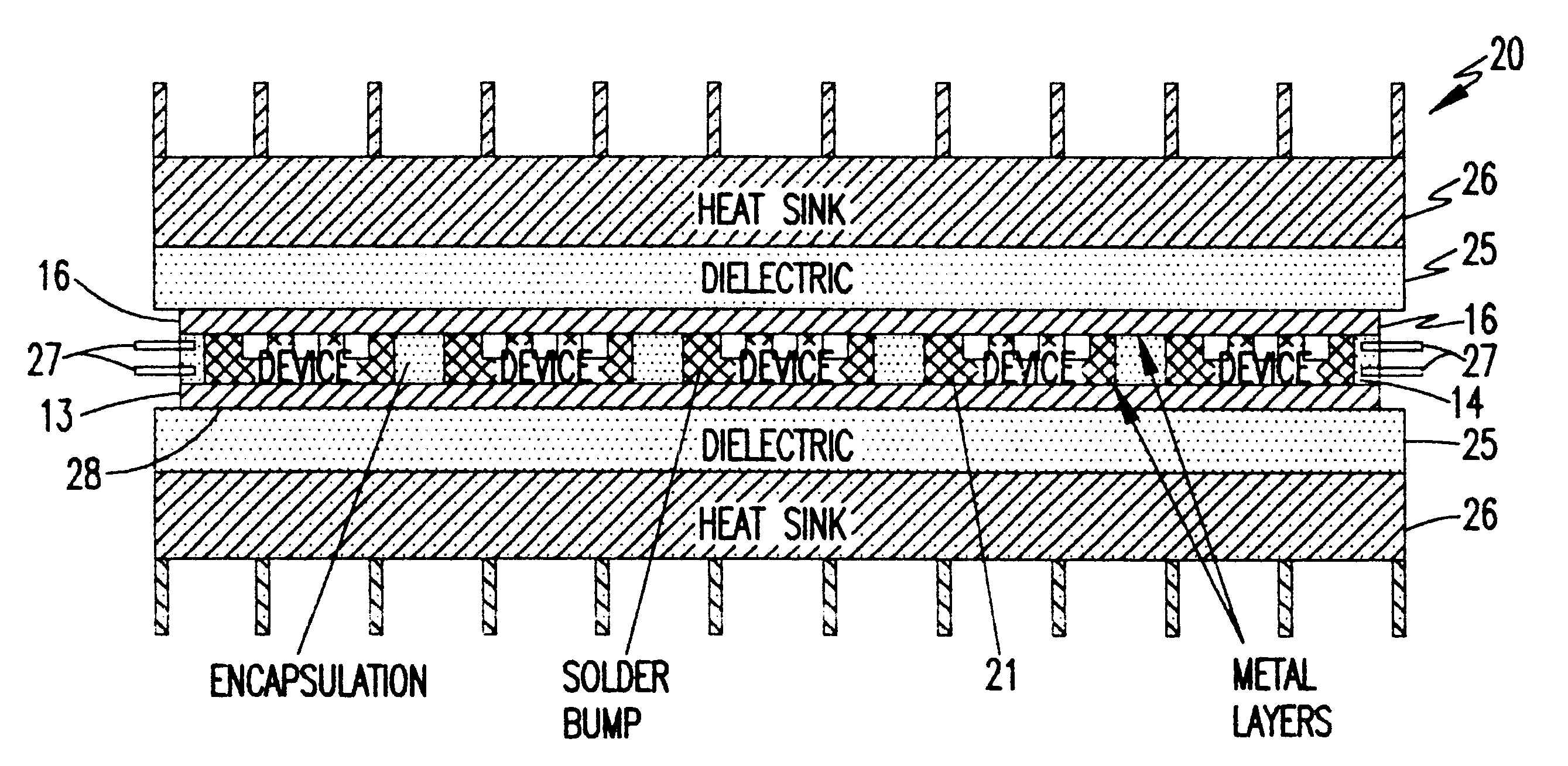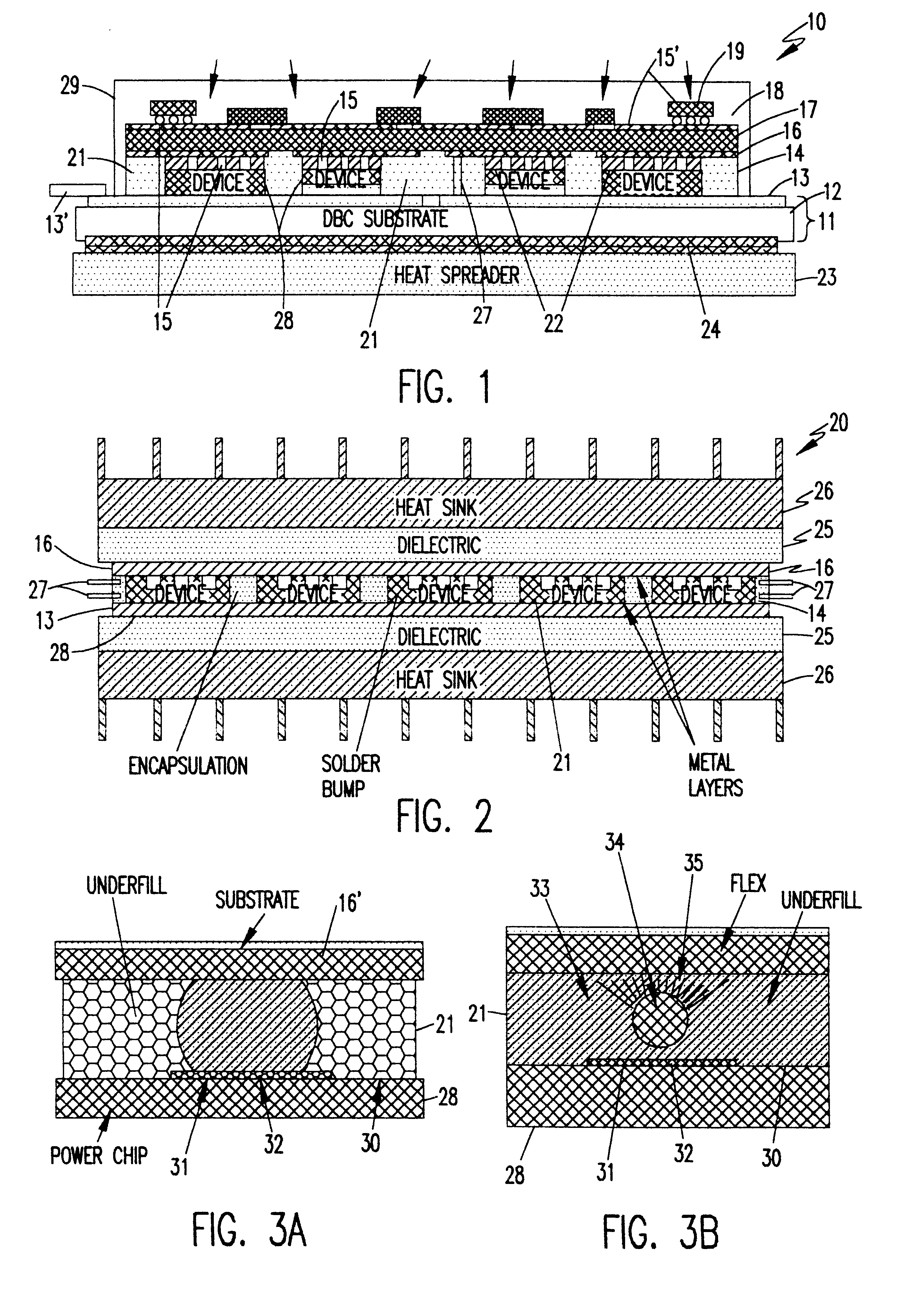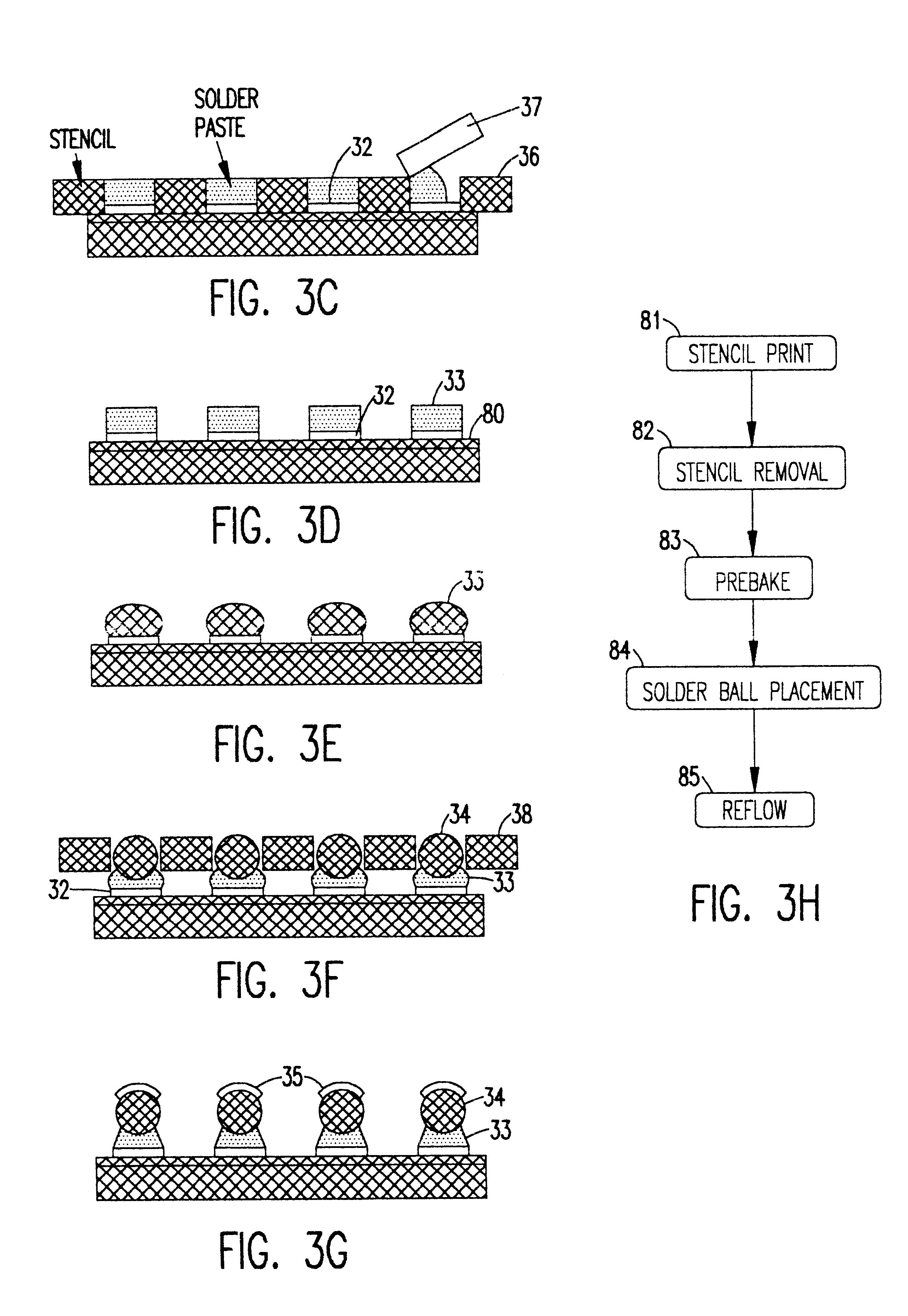Low-cost 3D flip-chip packaging technology for integrated power electronics modules
a technology of power electronics module and flip-chip, which is applied in the direction of solid-state devices, basic electric elements, electrical apparatus construction details, etc., can solve the problems of high resistance and parasitics, poor thermal management, and high cos
- Summary
- Abstract
- Description
- Claims
- Application Information
AI Technical Summary
Benefits of technology
Problems solved by technology
Method used
Image
Examples
first embodiment
FIG. 1 includes a first plate 11 including a heat conducting substrate such as Burquist board (a laminate comprising a relatively thick layer of aluminum 12, a thin layer of insulating polyimide or other dielectric and a layer 13 of copper of arbitrary thickness), direct bond copper (DBC) on both sides of an aluminum nitride (AlN) substrate which has a CTE closely matched to silicon or other insulated metal substrate. The metal layers should be sufficiently thick (and symmetrical) to provide adequate thermal and electrical conduction (while thin enough to avoid alteration of dimensional change with temperature of the assembly with aluminum nitride) and the insulator layers should be adequately thin to avoid compromise of thermal conduction between the metal layers.
The copper layer 12 may thus be patterned as required to provide interconnections, shielding and the like. The second plate comprises a layer of metal (e.g. copper) 16, an insulator layer 17 and a second metal (e.g. copper...
second embodiment
Moreover, but for the orientation of power devices 28, the structure is entirely symmetrical to further avoid the development of internal stresses. The orientation of the power devices is unimportant in view of the heat conduction and compliance of the encapsulant. As a perfecting feature of the invention, all of the power device could be made or CSP packaging applied to develop a substantially uniform height for improved heat conduction to surface 13. Power bus connections 27 can be made through the encapsulation at any point on the periphery of the device or even through the heat sinks 26 and dielectric 25, if desired.
Referring now to FIGS. 3A, 3B acceptable and preferred forms of the solder balls will now be discussed. The solder ball form shown in FIG. 3A is conventional in topology but not necessarily in scale. The structure illustrated in FIGS. 3A and 3B include a passivation film on the surface of power device 28, as is customary. An aluminum pad 31 is formed in an aperture i...
PUM
 Login to View More
Login to View More Abstract
Description
Claims
Application Information
 Login to View More
Login to View More - R&D
- Intellectual Property
- Life Sciences
- Materials
- Tech Scout
- Unparalleled Data Quality
- Higher Quality Content
- 60% Fewer Hallucinations
Browse by: Latest US Patents, China's latest patents, Technical Efficacy Thesaurus, Application Domain, Technology Topic, Popular Technical Reports.
© 2025 PatSnap. All rights reserved.Legal|Privacy policy|Modern Slavery Act Transparency Statement|Sitemap|About US| Contact US: help@patsnap.com



